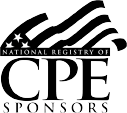In the ISBA community, we share best practices on how we overcome challenges in our appraisal practice – such as when we value the assets that transfer in a sale.
The client hired me to appraise a business that was to be offered for sale. This is a key assumption and plays a huge part in my story below. The task was to determine the fair market value of a 100% ownership interest in what I refer to as “The Assets That Typically Transfer in a Sale.”
I was not being asked to appraise an equity ownership interest. It is to determine what the Seller could sell certain assets owned by the Company for, such as the inventory, equipment, phone number, trained staff already in place, website, reputation, business model description, current customer contacts, supplier contacts, prior customer lists, the accumulated benefit of historical marketing, and so on. Just the assets, both intangible and tangible.
The Company owners would keep the cash, a significant amount of accounts receivable, and pay off any liabilities as part of any such transaction.
Outlining Steps
As this type of assignment is something I have done many times before, I was not too worried about it, and I went through my standard process.
- First, spread the company financial statements in my Excel template. In this case, the client provided Statements of Cash Flow, so I incorporated those as well. Those are always exciting to have access to!
- Second, downloaded a .csv file from BizMiner to perform a comparative financial ratio analysis to see how the subject operation measures against the industry average. This is a critical step to cite analysis as support for decisions regarding multiple assumptions throughout the report.
- Third, look at normalization adjustments. In this case, the two owners were paying themselves a very significant salary over the past couple of years. One would then have to adjust for that and several other discretionary expenditures.
- Fourth, bein applying valuation methods, starting with building a multi-year forecast. This company had been affected by the economic shutdowns associated with the Covid-19 pandemic. It was expected to recover over the next several years. (Some of you reading this may believe that management should provide the appraiser with any forecasts used in the valuation report. That’s fine, but my opinion in that regard is different, so I build my own.)
- Fifth, go to a reconciliation schedule to finalize the conclusion of value. Until then, I was unaware that I had made a mistake in the application of one of the methods. In this report, I used the adjusted book value (ABV) method, the discounted cash flow (DCF) method, and the private company transaction method relying on the price to seller’s discretionary earnings (P/SDE Multiple). I already knew that the ABV method was not going to receive any weight at the end, as the Company held a significant amount of intangible value. Still, both the DCF method after the application of my illiquidity discount and the P/SDE methods had returned an indication of value that were within 5% of each other! That was terrible to see! It meant that I had missed something in my projections!
At this point, many of you are wondering why I would be upset having two different indications of value from two different methods and even two different approaches supporting each other, as a 5% difference is the same number, right?
Ordinarily, I would agree with that statement. However, as the purpose of this assignment was to value the assets that transfer in a sale, I still had to convert my equity interest indication of value from the DCF method into its corresponding asset sale indication of value.
That conversion involves subtracting those assets that were included in the application of the DCF method, as I pulled my discount rate from the build-up method, so cash, AR, and any liabilities held by the subject were still included in my indication of value.
This Company held over $2 million in accounts receivable, which when included with the other required adjustments, now moved the indication of value I had determined via the DCF method well away from where I thought the value conclusion should be. My indications of value that should have been supporting each other, were now not making sense!
The Answer!
The answer, in this case, was to go back and look again at the assumptions built into the forecast that I had built. Up to this point, I was feeling arrogantly secure in my forecast, after all, I had considered historical trends, I had included an adjustment to both officers’ compensations, and I had utilized some pretty fancy Excel functions to calculate out my assumptions regarding various expenses. I was positive that there was nothing I could change that would be better than what I had already developed.
Well, that was not the case. I found adjustments that I could finetune, I found that I had not quite followed the trend that I saw going into the future with regard to certain details, and I found assumptions that I needed to modify, which included the length of my forecast. I ended up extending my forecast out another two years so as to have the relationship between the forecasted capital expenditures and the depreciation of same work out appropriately. In short, I had rushed through my forecast development phase, and it wasn’t until I got to the reconciliation of methods that I had seen something was not right.
My habit of utilizing multiple methods in each report worked my way. So did checking the reasonableness of my final value conclusion. I made corrections and concluded to a value I could support and be proud of, before sending the report out to my client.
Just because I’ve been doing this kind of work for over two decades doesn’t mean that I also don’t run into problems and issues. If you think that valuation work is hard and demanding, well yes, it can be, but it is also quite fun, and the rush I felt when I finally solved the problem I had, was quite exhilarating!
Are you looking to pursue a Business Certified Appraiser (BCA) credential? Visit ISBA Learning today. ISBA Learning is the home to our certifications and online courses. The Learning site also includes 100+ learning resources, including express courses, live and on-demand webinars, publications and reports, articles, templates, and worksheets!
Check out these self-paced courses:
- Advanced Financial Statement Analysis for Business Appraisers
- Business Certified Appraiser Certification Program











